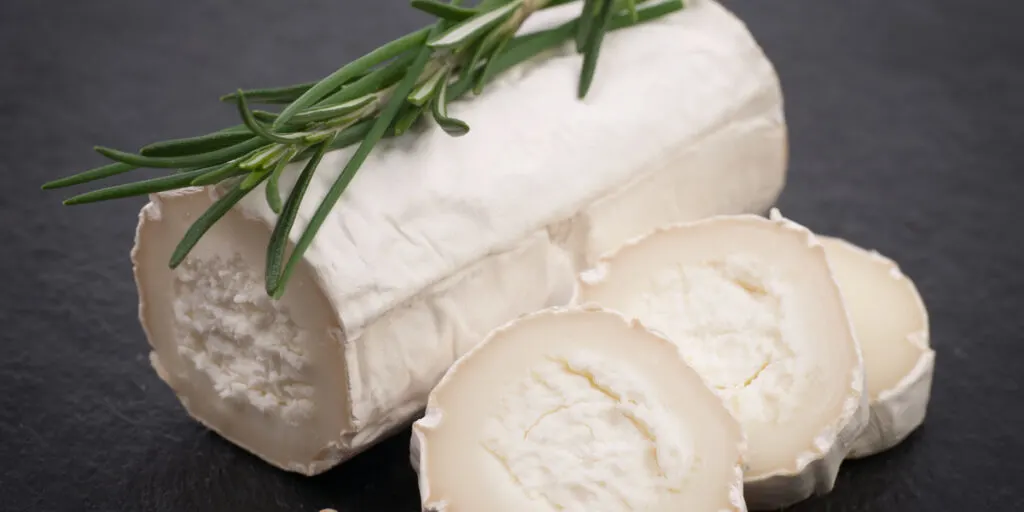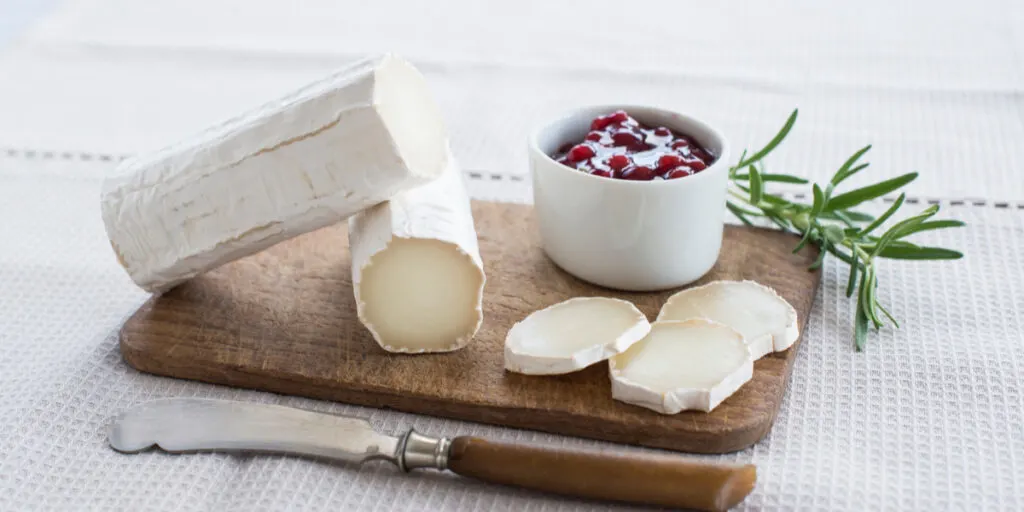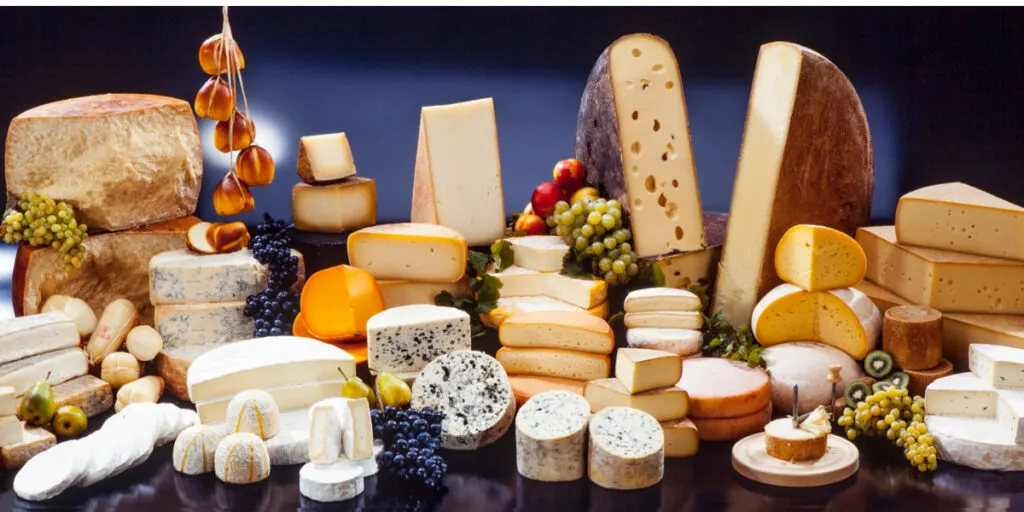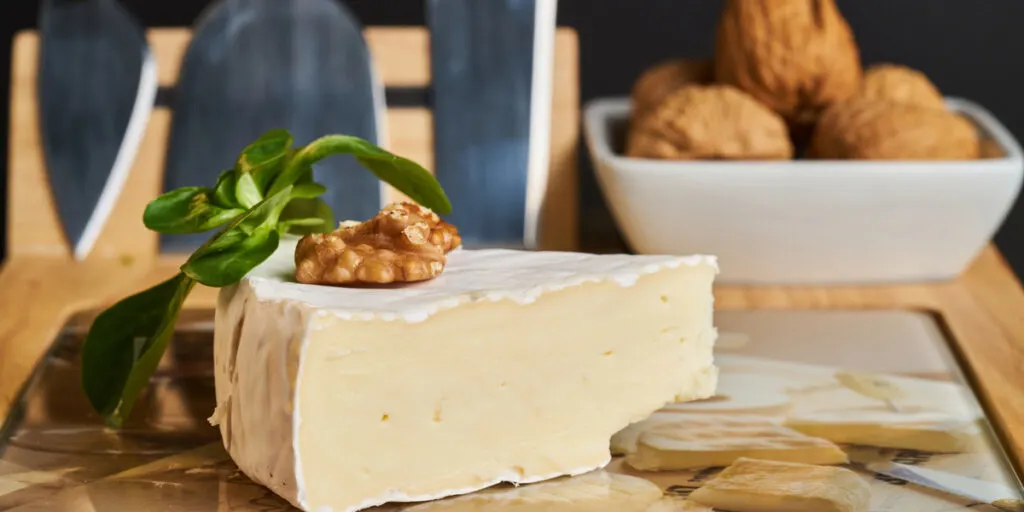Do you love cheese? Well, many people love cheese. If you have eaten a lot of cheese, there is a high chance that you have eaten mostly cow cheese. Are there other types of cheese? Of course.
Goat cheese is becoming more popular in households, and more people are turning to goats for their milk and cheese.
What is the difference between cow cheese and goat cheese? Which should you eat?
Cow cheese and goat cheese are similar, but they do have a few differences. For example, cow cheese has more proteins, while goat cheese has more fatty acids.
People who are intolerant to cow cheese may be able to consume goat cheese without any fear.
So is cow cheese or goat cheese best for you? What are the other differences between cow cheese and goat cheese? Continue reading.
Table of Contents
Some Differences Between Cow Cheese and Goat Cheese
Before you decide cow cheese or goat cheese is best for you, you need to know the differences between them. Here are some notable differences between cow cheese and goat cheese:
1. Cow Cheese Has More Milk Proteins
There are more proteins in cow cheese than in goat cheese. Cow cheese has at least three grams (0.1 ounces) of protein per 100 grams (3.5 ounces) of cheese, while goat cheese has a slightly lower number than that. This means that cow cheese is best for people looking for more protein.
2. Goat Cheese Has More Fatty Acids
Even though cow cheese has more proteins, goat cheese has more minerals and fatty acids. Examples of fatty acids in cheese are palmitic acid, oleic acid, and myristic acid. Fatty acids in cheese and other food products serve energy to your cells and organs, so you surely need fatty acids.

3. There Is a Difference in the Taste of Goat Cheese and Cow Cheese
Goat cheese has a tangy flavor due to the presence of more minerals and fatty acids. The flavor of goat cheese is its signature property and is what attracts people to eat it. Cow cheese tastes more neutral than goat cheese. You can describe the taste of goat cheese as sour or strong and the taste of cow cheese as mild.
4. Different Consistencies
Goat cheese feels smoother and creamier because of its low protein content. Goat cheese is generally softer than cow cheese, but aged goat cheese can feel chalky and earthy.
As for cow cheese, it feels stronger and stretches more than goat cheese. The cheese of goats quickly crumbles or falls apart, but that of cows has a stretchy attribute that prevents it from crumbling quickly.
5. People Allergic to Cheese Can Test Goat Cheese
Some people who are lactose intolerant cannot eat cheese. Others are simply allergic to cow cheese because they may be allergic to one or two properties in cow’s milk. If you are not lactose intolerant, you may be able to eat goat cheese.

6. Availability of Cow Cheese and Goat Cheese
Cow cheese is more popular than goat cheese. It does not matter where you travel in the world; you’ll surely find cow’s milk or cheese. As for goat cheese, you’ll need to add extra effort to find it.
In the coming years, goat cheese will become more popular because more people are raising goats. Goats are easier to raise than cows, and they surely produce enough milk to make cheese with.
7. Minerals and Health-Related Differences
Goat cheese has a higher level of calcium and a lower level of casein. The properties of goat cheese are linked to insulin resistance and the prevention of type-1 diabetes. You should discuss consuming goat cheese with your doctor to see what they have to say about it.
Now you know some of the most notable differences between cow cheese and goat cheese. What type of cheese should you consume and why? Continue reading.

When Should You Eat Cow Cheese or Goat Cheese?
Here are some cases when you should eat either goat cheese, cow cheese, both, or none:
1. Goat Cheese for Lovers of Soft Cheese
If you prefer soft cheese, you should go for goat cheese. Goat cheese is very soft and not as hard as cow cheese. Even when you try to harden goat cheese, it will not become hard like cow cheese. If you love cream cheese or other types of cheese that are soft, consider eating goat cheese.
2. Cow Cheese for People New to Eating Cheese
Some people have never tried cheese before. It is best that you taste the most common type of cheese if you are trying it out for the first time. Cow cheese is delicious, and this is why it is popular.
Even though there’s a chance that you will prefer goat cheese, you should still start with the conventional type of cheese.
3. Always Follow Your Doctor’s Advice
Do you have a health condition in which you need to carefully decide what to eat? Make sure that you stick to your doctor’s advice. If your doctor tells you to abstain from eating cheese for a while, you should kindly abstain.
Also, your doctor can refer a special type of cheese for you just in case you love cheese.
4. If You Like, You Can Try Both

There is surely nothing stopping you from eating the two types of cheese. You can try goat cheese and cow cheese. Eat cow cheese when you want, and then eat goat cheese some other time.
5. There Are More Types of Animal Cheese to Try
Who says that there are only two types of cheese? There are even more types of cheese that you can try. Some other types of cheese to try are:
- Sheep cheese
- Buffalo cheese
- Alpaca cheese
- Horse cheese
- Camel cheese
- Yak cheese
- Llama cheese
- Reindeer cheese
- Donkey cheese
As you can see, there are many types of cheese to try. Don’t you think?

Specific Types of Cow Cheese and Goat Cheese
The terms “cow cheese” and “goat cheese” represent so many types of cheese. Depending on the region, you’ll find many types of cheese made from the milk of cows and goats.
For example, here are some types of cheese that you can make with cow’s milk:
- Pot cheese (USA)
- Fromage blanc (France)
- Cottage cheese (USA)
- Cream cheese (UK)
- Mascarpone (Italy)
- Quark (Austria, Germany)
- Queso fresco (Mexico)
- Skyr (Iceland)
- Paneer (India)
- Stilton (UK)
- Colby (USA)
- Cheddar (UK)
- Port Salut (France)
- Jack cheeses (USA)
- Gouda (Netherlands)
- Gruyère (France)
- Comté (France)
- Provolone (Italy)
- Parmesan (Italy)
- Edam (Netherlands)
- Emmental (Switzerland)

Here are some types of cheese that you can make with goat’s milk:
- Crottin de Chavignol (France)
- Chabichou (France)
- Cabécou (France)
- Banon (France)
- Humboldt Fog (USA)
- Valençay (France)
Here are some types of cheese that you can make with either cow’s milk or goat’s milk:
- Ricotta (Italy)
- Farmer’s cheese (USA)
- Castelmagno (Italy)
- Cabrales (Spain)
- Bra (Italy)
- Labneh (Middle East)
As you can see, there are so many types of cheese. This means that you can surely try more to find the one you prefer the most.

How to Make Cow Cheese or Goat Cheese
It does not matter if you want to make cow cheese or goat cheese: the procedure is similar. Here is the general process to make cheese:
- Boil half a gallon of pasteurized milk: You can surely use more, but be sure to properly calculate the difference so that you can tell the exact amount of other ingredients to use.
- When the milk just starts to boil, remove it from heat.
- Add 1/4 cup of lemon juice or vinegar. You should go for vinegar if you do not like the taste of lemon juice.
- Leave it until it starts to curdle in 10 minutes. Leave it at room temperature.
- Pour the curd on a cheesecloth. You should use a very clean cheesecloth. You can get it in various stores nearby.
- Tie the cloth very tight. Tie the cloth as tight as possible so that you can quickly drain away moisture from the cheese.
- Wait for two hours to let the excess moisture drip off. You want to make sure that most of the moisture drains off before you loosen the cloth.
- It is ready. You can make use of your cheese now or wait for it to age.
Note that the process of making cheese may vary according to the milk and type of cheese you want to make.
Final Thoughts
Cheese is a wonderful food and so many people love it. The type of cheese that you like, however, depends on your taste. While some people prefer conventional cow cheese, others prefer goat cheese. Well, you can always try both types of cheese.
Sources
- https://modernfarmer.com/2017/06/whats-difference-cow-cheese-goat-cheese/
- https://m.timesofindia.com/life-style/food-news/is-goat-cheese-better-than-cow-cheese/amp_etphotostory/78092382.cms
- https://www.masterclass.com/articles/goat-milk-cheese-vs-cow-milk-cheese#5-common-types-of-cows-milk-cheese
- https://www.prevention.com/food-nutrition/healthy-eating/a20447024/goat-cheese/
